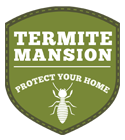Requirements of Termite Baiting for Maximum Potential
Baiting Vs Barriers
The use of an active ingredient in a cellulose matrix as a means of controlling/ eradicating termite colonies has been used for hundreds of years. However, the use of modern growth inhibiting chemicals has been used and studied for the last 30 years.
There have been over 100 scientific studies on these methods but much less via unbiased authors and even fewer comparing methods.
Termite baiting as a means of termite suppression and complete colony eradication has made enormous advances during recent times but also continues to be used in outdated and inefficient methods.
Most unbiased authors now agree that chemical termite barriers are simply a building construction process which will fail immediately or over time and are not considered a means of controlling/ eradicating termite colonies.
When non-repellent barriers were first introduced, increased protection was expected due to horizontal transfer (between termites). Non-repellent barriers can take years to stop repelling termites and horizontal transfer can only occur in areas close to the treated zone. Saran and Rust (2007) found the maximum distance of termite movement away from a fipronil treated area was about 2 m.
Requirements of termite baiting for colony eradication
Traditionally it was considered if termites feed on an active bait, then disappear from all monitoring stations, by definition the colony foraging in this network has been eliminated (Su 2003). We now know that temporary abandonment due to predators or changes in environmental conditions is very common.
We also now know that subterranean termites consume a number of food types at the same time incorporating the food into their workings and creating a closed environment with the food source into their system of tunnels. Thereby creating an (undisturbed by their predators) environment where the termites can maximise consumption of the food source. To do this the termites require a reliable moisture source to incorporate with the food, as one of the requirements of termite baiting.
Termite baits commercially available contain either chitin synthesis inhibitors (CSIs), or toxicants such as sulfluramid and hydramethylnon. The first CSI termite bait registered was with hexaflumuron. Hexaflumuron use as a CSI has since been replaced by noviflumuron in USA as it has a slower action but faster elimination of colonies. Other CSI baits include lufenuron and diflubenzuron. More recently developed CSI’s are bistrifluron and chlorfluazuron. CSI’s have become an absolute requirement of termite baiting. In independent studies Chlorfluazuron (most used CSI when registered in country for use) had a better percentage of colony eradication and 50% faster rate than Hexaflumuron (the next most popular CSI in Australia).
To achieve colony eradication and not suppression, four important facts have become requirements of termite baiting
- Reliable moisture source or in the case of commercially available baits, made up with precise amount of water to consume and regurgitate as necessary (dry baiting systems generally fail in elimination of colony because of this requirement, plus consumption without moisture is slow).
- A method of providing bait into their closed system and then adding more bait without disturbing the consumption or requiring the colony to rebuild their workings again after each addition of bait (most monitoring systems with too much soil or air contact of bait matrix fail on this requirement).
- An active ingredient that can reliably result in complete colony and queen elimination in a reasonable time frame (months).
- Highly palatable and desirable as a food source over other choices (not all commercially available baits meet this basic requirement), including most dry style baits that deteriorate over time.

No comments